Clothing Store Financial Model Excel Template
Easy-to-use financial model for clothing business. Feasibility study, forecasts and budget. Printable financial statements. Ready for use. All in Excel.
TEMPLATE DESCRIPTION
Creating a successful clothing business will require you to dedicate time and effort to develop a sound plan. So, our Clothing Store Financial Model Excel template will lead you for a solid financial forecasting plan.
This model will assist you in predicting sales, costs, cash flows, and much more.
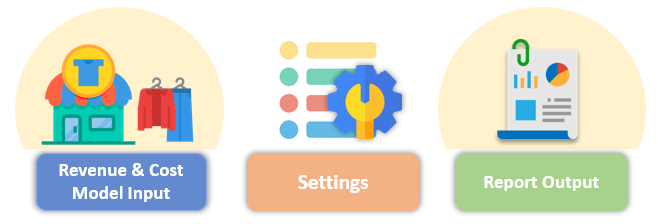
In addition, if you need a business plan, the Clothing Store Financial Model tool will give you all the necessary financial data, along with charts and reports.
Clothing Store Financial Model Excel Template Features:
Generally, the Clothing Store Financial Model template’s goal is enabling you to produce sound financial forecasts taking into account all essential details and industry-specific features. Use alternative scenarios and assumptions to:
- Develop monthly and yearly financial projections for up to 10 years;
- Factor long-term marketing trends;
- Account for seasonality of customer demand;
- And lastly, combine different methods of financing, and evaluate overall capital requirements.
While our Clothing Store Financial Model includes all features essential for sound financial model templates, it is simple and intuitively understandable from the user perspective.
Settings:
In the Model Configuration Section:
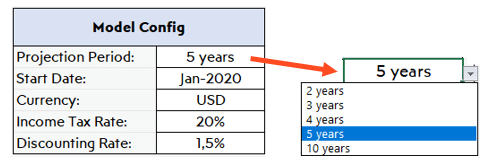
- Set a length of the Projection Period. You can select 2 to 10 years by picking a value from the drop-down list;
- Specify the Start Date of the project;
- Enter a code of the Currency for your excel financial model for clothing stores;
- Enter Discount Rate for the calculation of the Net Present Value (NPV) of the project. If you are unsure what Discount Rate should be, enter the interest rate that usually applies to long-term saving accounts. However, if you have no interest in producing a formal business plan or investor pitch deck, you can simply ignore this setting.
- Lastly, enter the Income Tax Rate that will affect net profit after taxation.
In the Table of Good’s Categories:

- Price per Unit is an average selling price, before applying discounts;
- Mark-Up percentage shows how much you are going to add to the hard cost of goods in order to get regular selling price before discounts;
- Credit Period is a number of days showing how long, on average, it is going to take you to pay for purchased goods;
- Seasonal Inventory should be selected ‘Yes’ if a category has a clear seasonal sale pattern. For example, overcoats and bikinis. It will allow you to adjust inventory levels for seasonality effect;
- Days of Inventory is a number of days showing how fast each category of goods can be sold, in other words, how many days of sales your inventory has to cover in this clothing store financial model;
- Shrinkage Allowance shows the percentage of inventory that is going to be lost due to various reasons rather than sold.
Furthermore, a table of Sales Trends allows you to set long-term trends in order to account for how improving customer awareness and loyalty will affect your overall sales over years. So, if you do not expect your sales to change from year to year, you can leave this part of the table blank.
Revenue & Cost Model Inputs:
In the Sales & Inventory Section:
Select goods categories in the Sales Forecast table. For each category, enter projected average daily sales (in pieces).
- Sales (in pieces); Sales projections take into account: average daily sales; a number of days in the month; long-term sales trend, if any; seasonal fluctuations of physical unit sales (Seasonal Sales Trends).
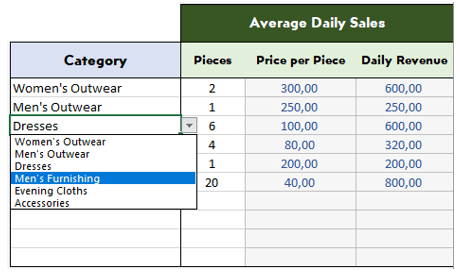
Seasonal Sales Trend in Clothing Store Financial Model
Firstly, this section allows you to enter, for each category, and each month of a year, percentages of average sales (in pieces) that can be expected in the respective months due to an effect of seasonal fluctuations of demand. For seasonal goods, set 0% in the months when customers typically do not buy those goods.
Do not leave them blank, because the blank seasonal trend is deemed as ‘no seasonal variations’.
Similarly, the Seasonal Discounts table allows you to account for seasonal fluctuations of prices separately from fluctuating of physical quantities. For example, after the marketing season is over, you may need to sell leftovers with big discounts. Once again, leaving it blank would mean ‘no price variation’.
Other Sales & Inventory Data Input
- Sales Revenue; Sales Revenue projections are calculated based on sales projections (in pieces), average selling prices, and Seasonal Discounts. So, if you expect selling prices to increase over time (for example, due to inflation), enter the respective increase rate. Do not use this to account for changes in goods sold. Use Sales Trend (in the Dashboard section) instead.
- Inventory Disposal (in pieces). It typically differs from Sales Forecast due to shrinkage;
- Cost Of Sales; Cost of sales projections will take into account: a number of goods disposed of in the month (due to sale and shrinkage); a number of days the month; average selling prices; and projected markup rate. If you expect inflation-driven changes of purchase prices, enter the respective parameters into Cost Increase fields of this clothing store financial model.
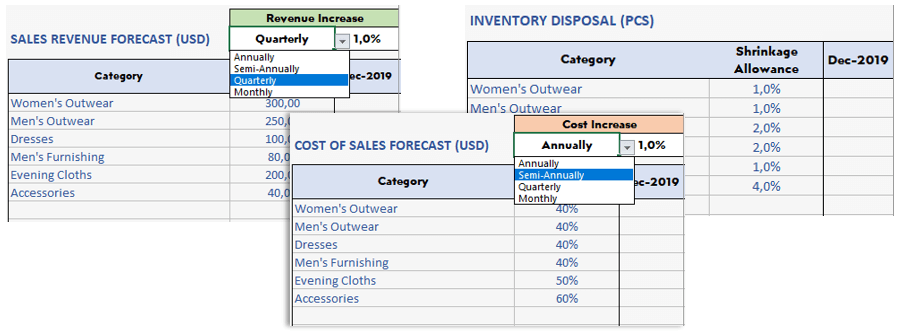
- Merchandise Inventory (in pieces) will take into account Days of Inventory, as well as the seasonality of the inventory if any.
- Merchandise Inventory At Cost; The cost of inventory will be calculated as a product of pieces of inventory and average purchasing prices.
- Merchandise Purchase (in pieces); The numbers of pieces purchased will be calculated as a difference between the opening and closing inventory, plus inventory disposed of during the month.

- Merchandise Purchase Cost; Costs of purchased inventory will be calculated as products of pieces purchased and purchasing prices.
- Payments To Suppliers; Amounts paid to suppliers will take into account the costs of purchased inventory and the number of days of credit. If you set your purchase credit period to a non-zero value, your cash payments to suppliers will lag after the purchase of goods by a respective number of days.
After entering sales-related assumptions in the Sales & Inventory section, go to the Fixed Costs section.
In the Fixed Costs Section:
Firstly, In the Staff table of this financial model excel template for clothing stores, enter the names of employee positions, along with their respective salaries. For each projected month, enter the expected numbers of employees.
So, if you expect that salaries will increase over time, enter expected increase rates and frequencies into Salary Increase fields. The template will calculate time-adjusted salaries for each month.
 In the Other Monthly Expenses table, enter names of expense items into the list, and then enter expected monthly expense amounts for each projected month. Afterward, enter expected startup costs into the Startup Costs section.
In the Other Monthly Expenses table, enter names of expense items into the list, and then enter expected monthly expense amounts for each projected month. Afterward, enter expected startup costs into the Startup Costs section.
In the Startup Costs Section:
Particularly, the usefulness of the model’s outcomes will depend on the degree of accuracy in estimating startup costs. However, as we already said, it is rather dangerous to underestimate them. Moreover, there is an Account field there. You can indicate whether respective startup expenditure will create an asset (for example, property, equipment, software, or patents), or be accounted for as an expense.

However, if you do not need to produce pro forma financial statements for the business plan, you can ignore this column altogether.
Besides, if your purpose is simply to get a snapshot of projected revenues and costs, you can jump right to the reports. However, if you need a more comprehensive financial picture, go to the Miscellaneous section first.
Here you can add figures related to financing and fixed assets.
In the Miscellaneous Section of Clothing Store Financial Model
In the Debt & Equity Financing table, enter:

- Equity contribution – money injected to the business by owners (co-investors);
- Equity repayments – the amounts of initial investments withdrawn by owners (co-investors) at par, as well as payouts to the owners (co-investors) expected to be made out of net profit;
- Debt Issuance – it is the amounts of loans received from a bank or other lender;
- Debt Repayment – payments in order to repay the principal amount of the loan;
- Interest Paid – payments for the use of the loan.
Fixed assets are those you expect to be in use for more than one year. They include tangible assets, also known as property, plant and equipment, and intangible assets (software, patents and trademarks). Enter amounts you are going to spend for fixed assets, other than startup costs, to the Fixed Assets table.
For the sake of simplicity, we do not calculate depreciation and amortization. However, you can add them manually in this table.

Furthermore, you will instantly be able to see a snapshot of profit and cash flow in the tables above. So, please pay attention to the End Cash Balance figures. Generally, if any are in red, it means your business is running out of cash in respective months. In this case, you should consider an additional equity contribution, or a loan taken in order to balance cash.
Also, you can play with the equity and debt figures above and immediately see an effect here.
Report Outputs of Clothing Store Financial Model Excel Template
Now you can go to the reports. They are available from the Dashboard section. Clothing Store Financial Model template contains the following reports: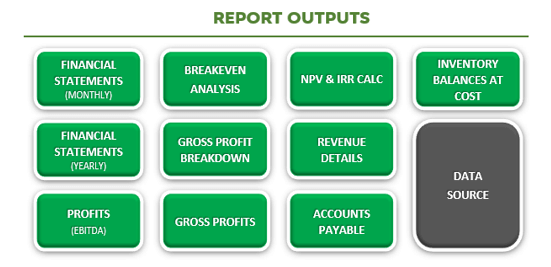
- Monthly and yearly pro-forma Financial Statements including Income statement, Balance sheet, and Cash flow statement;
- Profit (EBITDA) report presenting breakdowns of income and operating expenses by line items;
- Breakeven Analysis report giving you an estimation of the payback period;
- Gross Profit Breakdown report displaying details of income, direct costs, and profit margins for each category of goods;
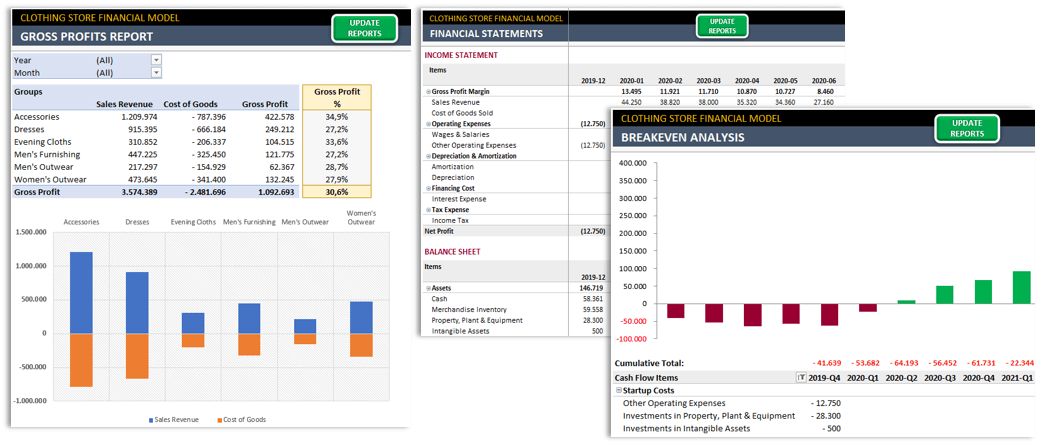
- Gross Profit report displaying a summary of gross margins for each category in the clothing store financial model tool;
- NPV and IRR and cumulative discounted cash flow giving you an estimation of discounted payback period;
- Revenue Details report displaying numbers of goods sold, average selling prices (after applicable discounts), and revenues;
- Account Payable report quantifying factors affecting accounts payable in each reporting quarter, broken down by categories of goods;
- Lastly, the Inventory Balances report displaying numbers and cost of inventory in stock, at the end of each reporting quarter.
CLOTHING STORE FINANCIAL MODEL EXCEL TEMPLATE FEATURES SUMMARY:
- Financial Feasibility Study for Clothing Store in Excel
- Innovative Reporting System
- Works both on Mac and Windows
- No installation needed, ready to use.
- Professional design and ready to present
- On Sheet Instructions
- White Label
- Print-Ready
- Compatible with Excel 2010 and later versions
SOMEKA FINANCIAL MODELS COLLECTION
USER REVIEWS & COMMENTS
3 reviews for Clothing Store Financial Model Excel Template
You must be logged in to post a review.
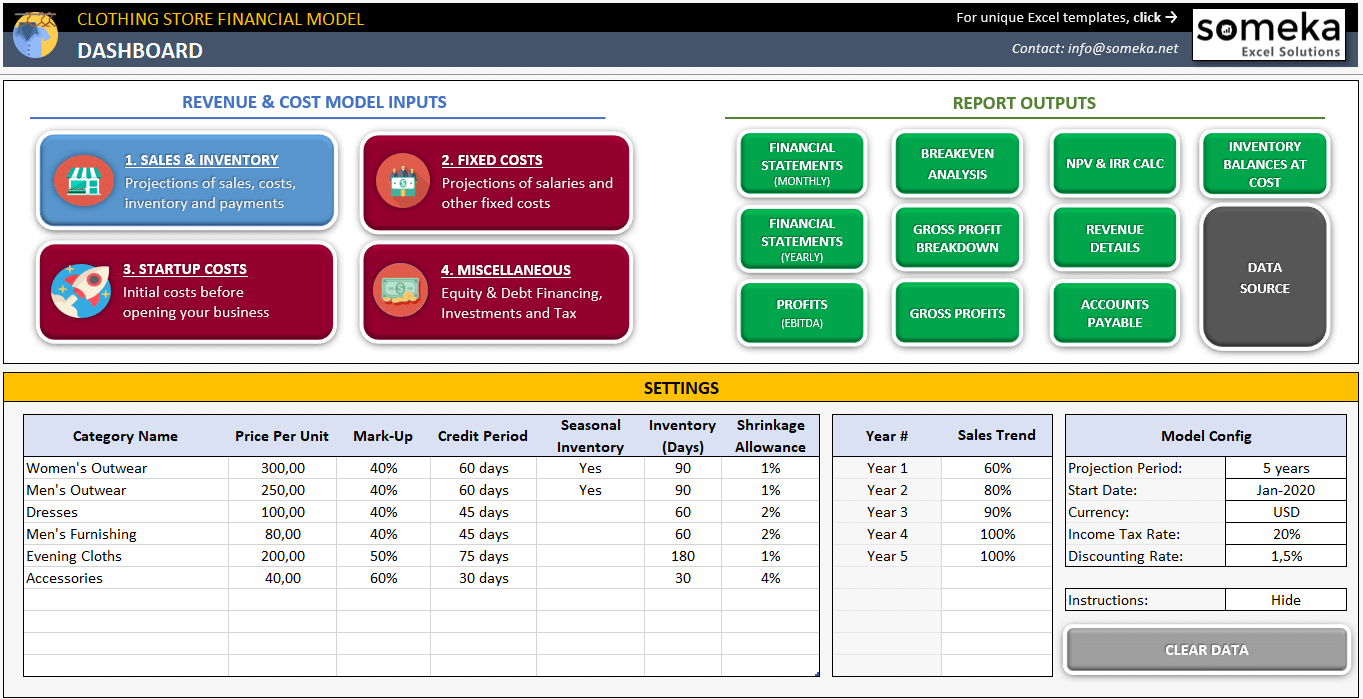
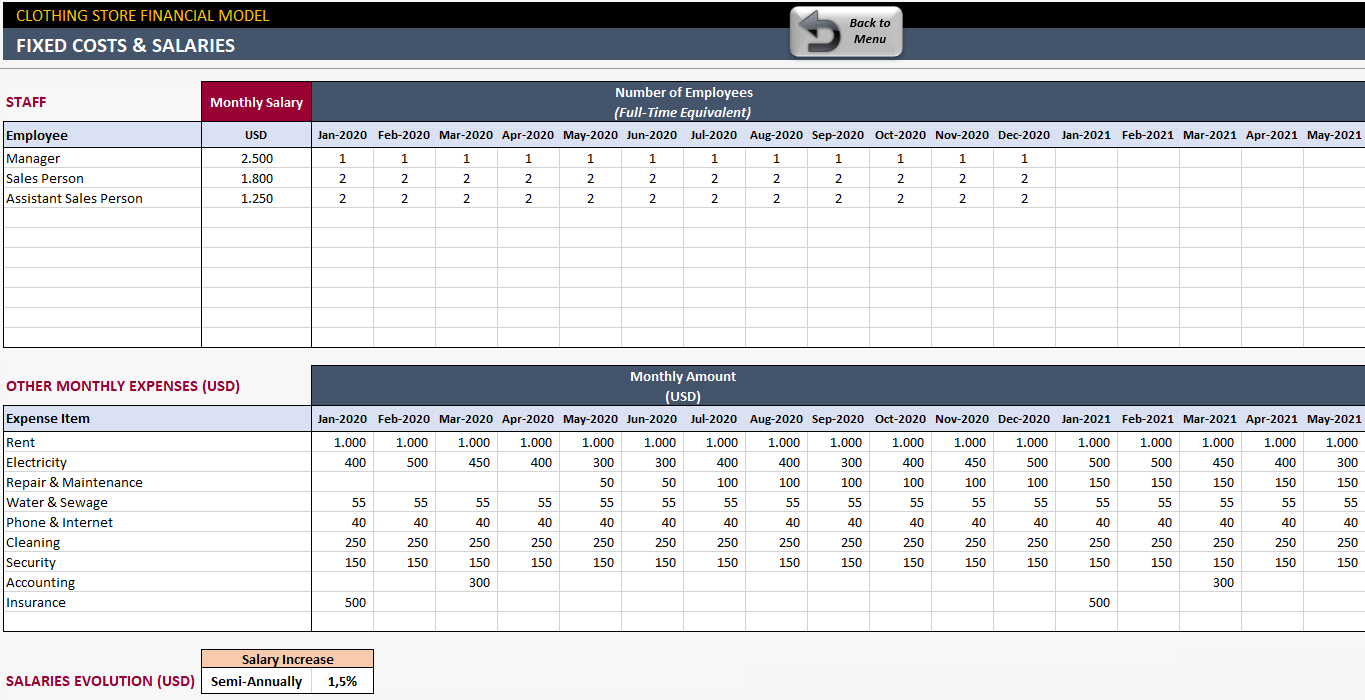
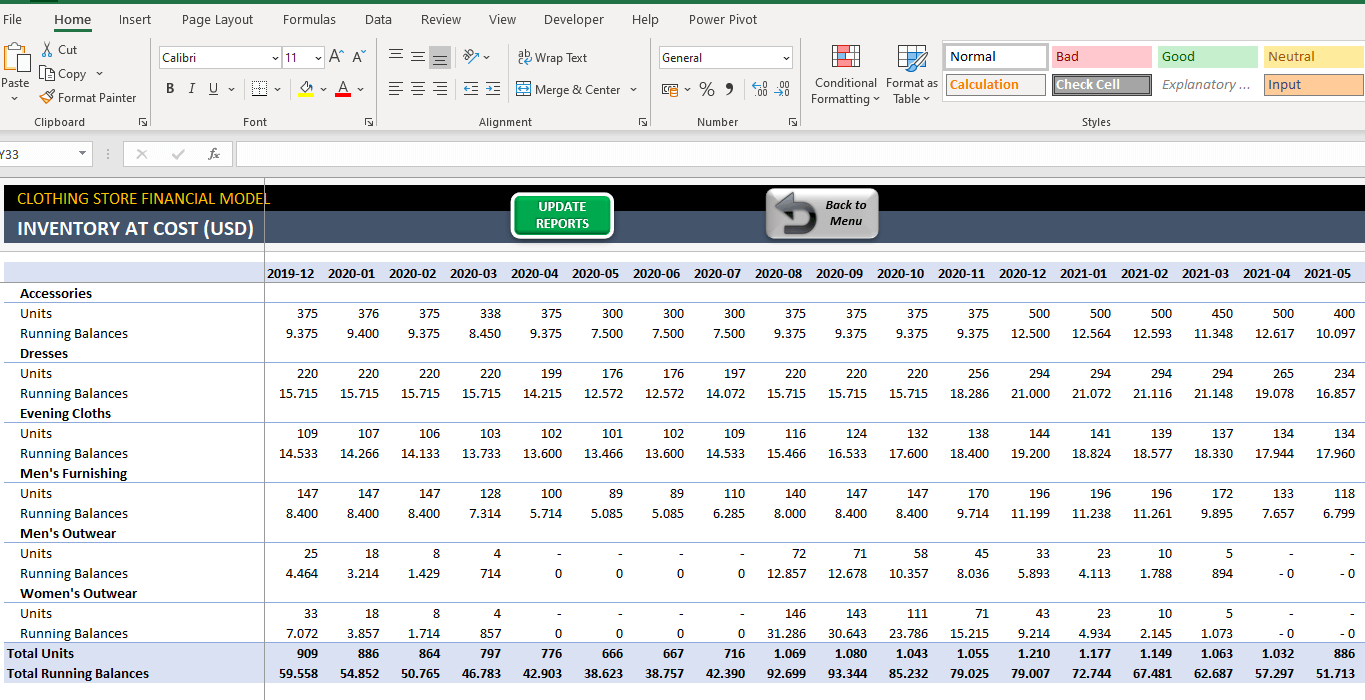
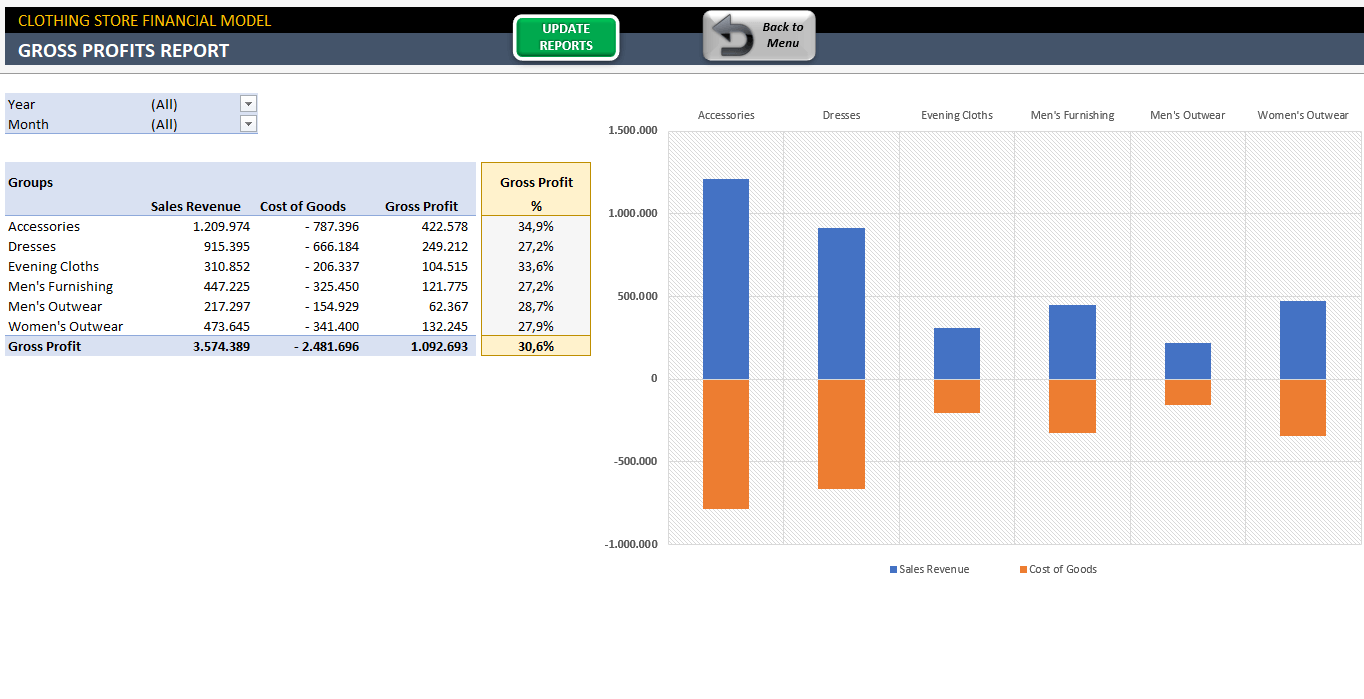
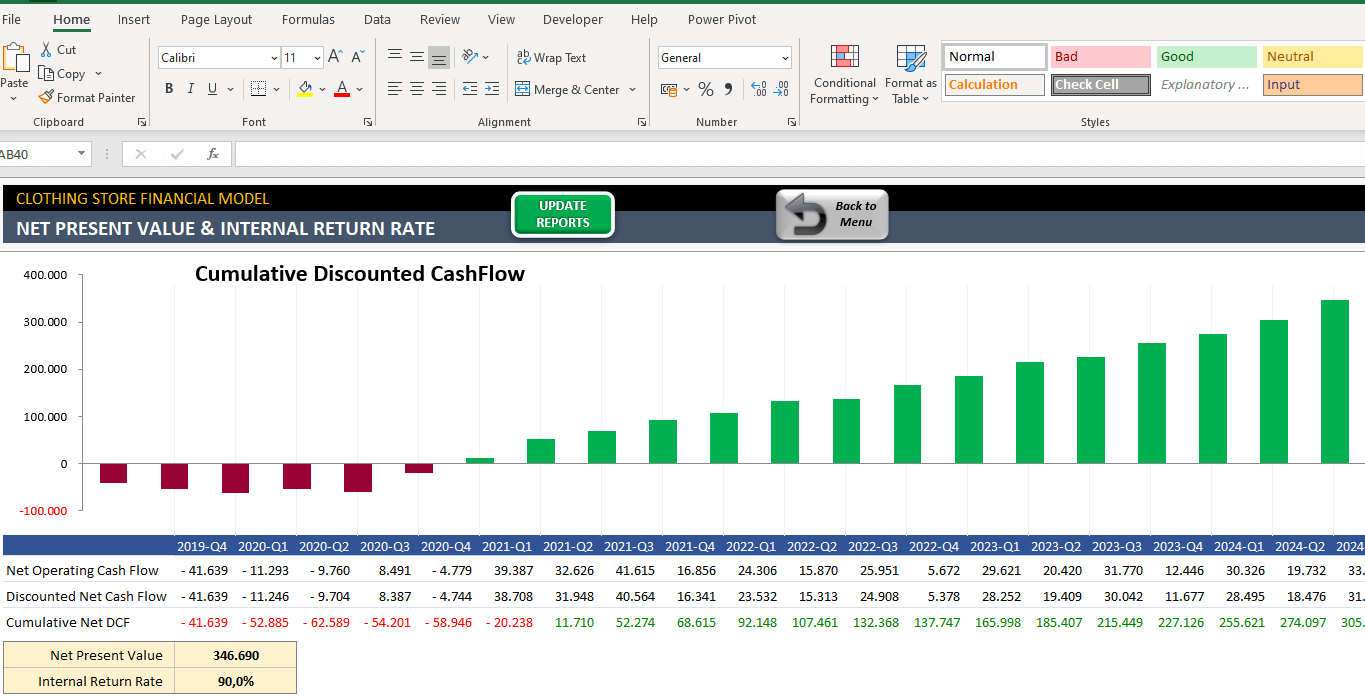
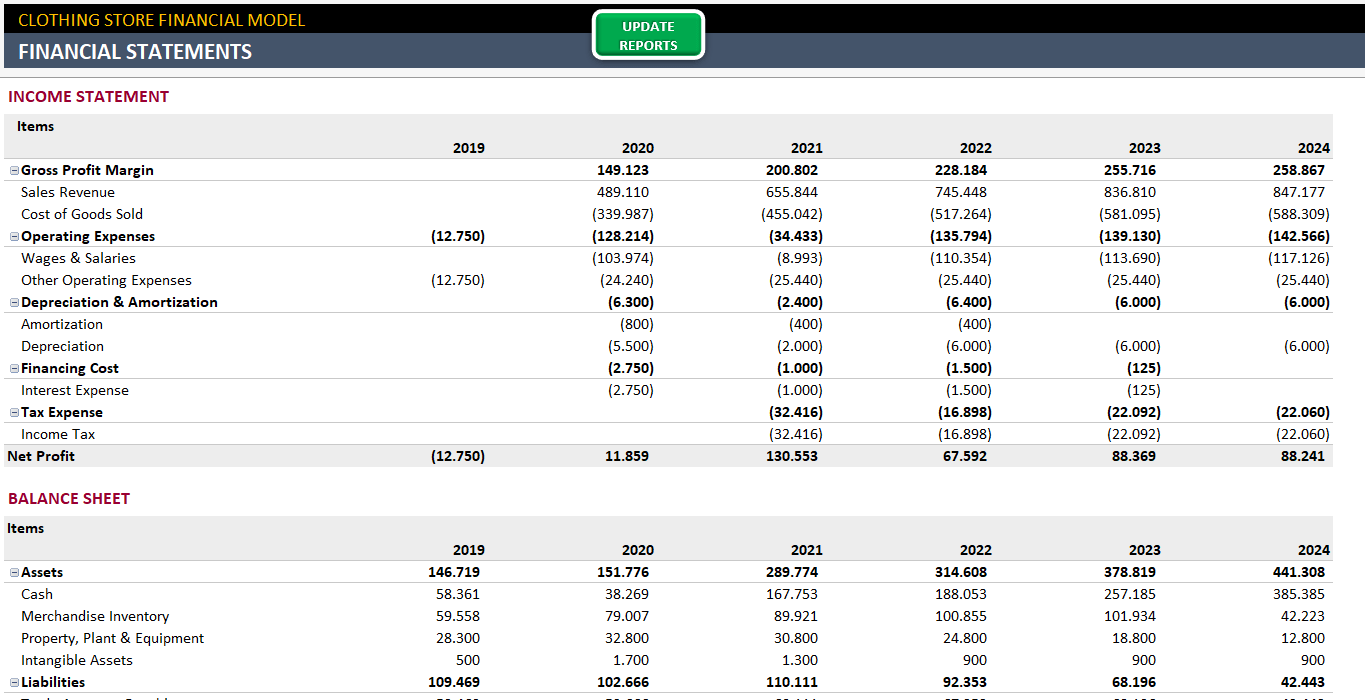
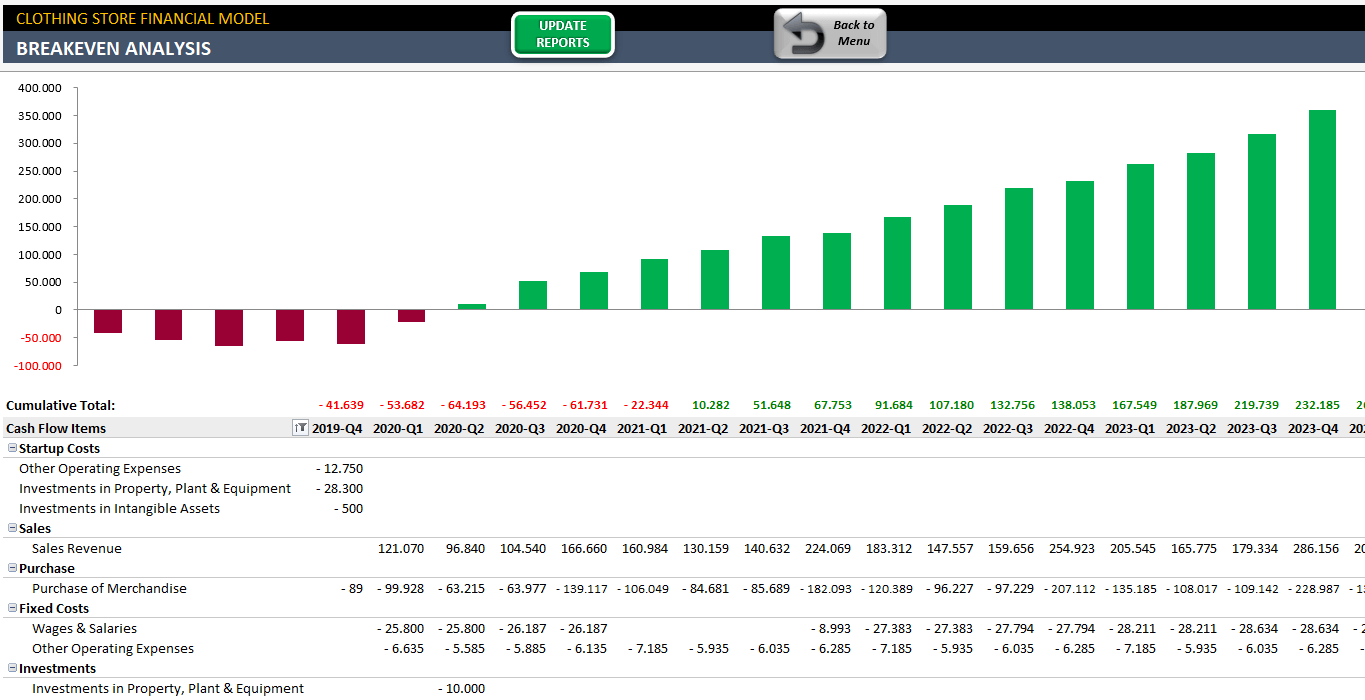
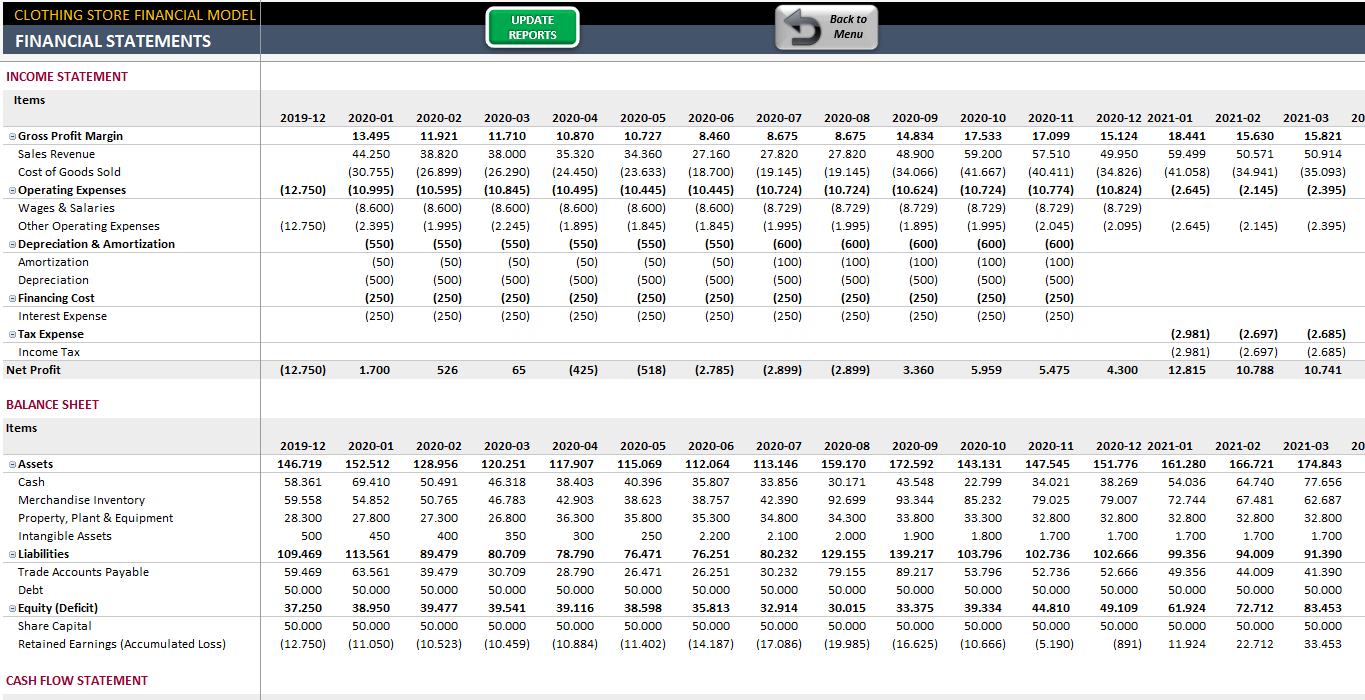
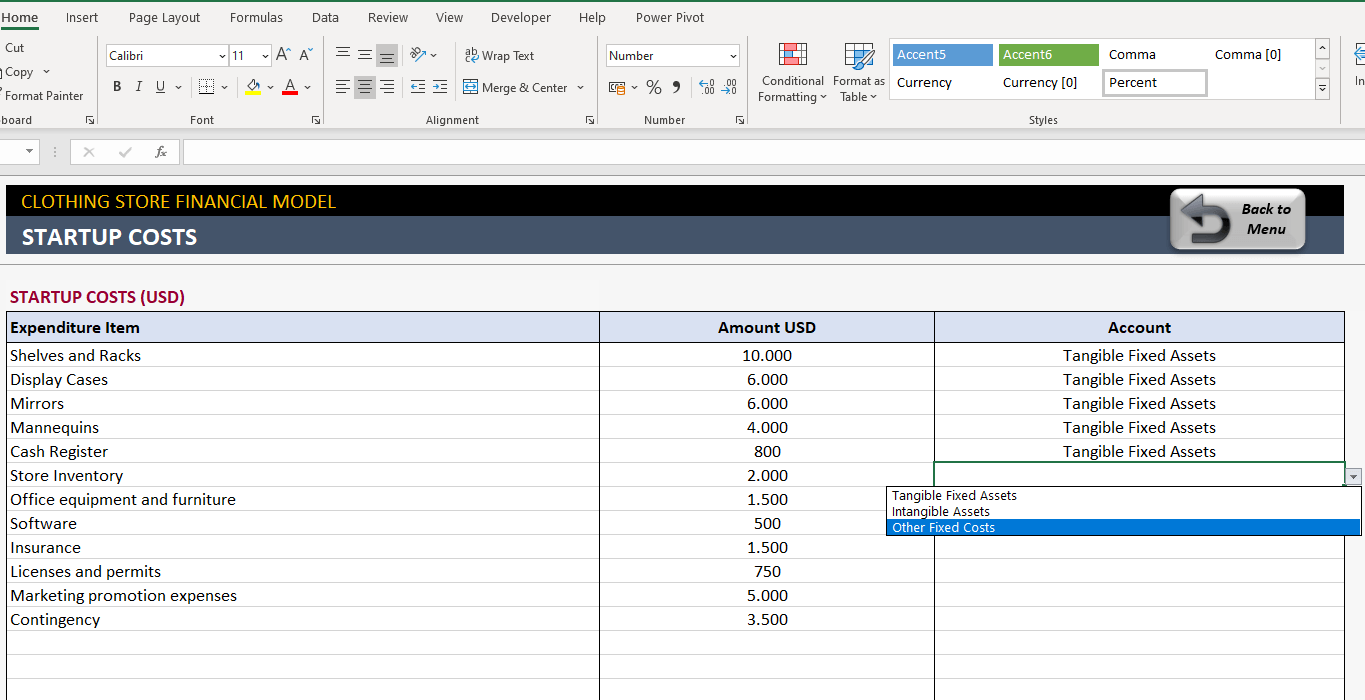
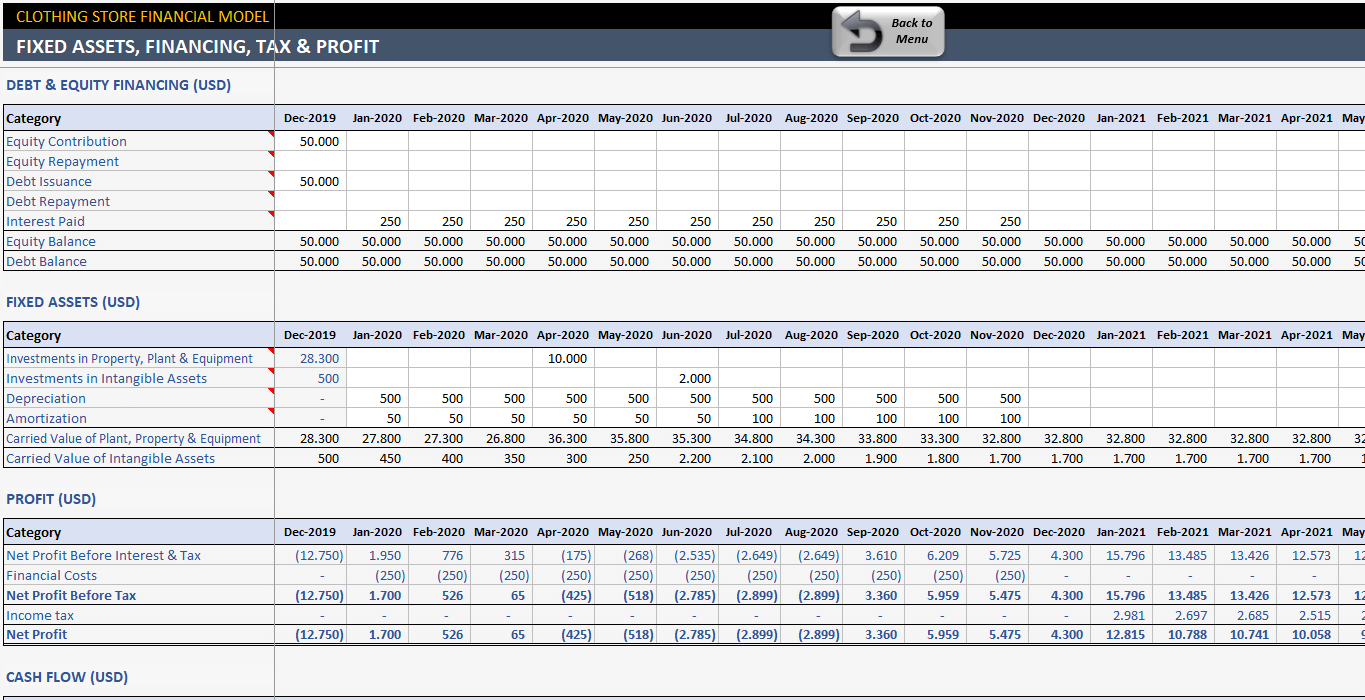
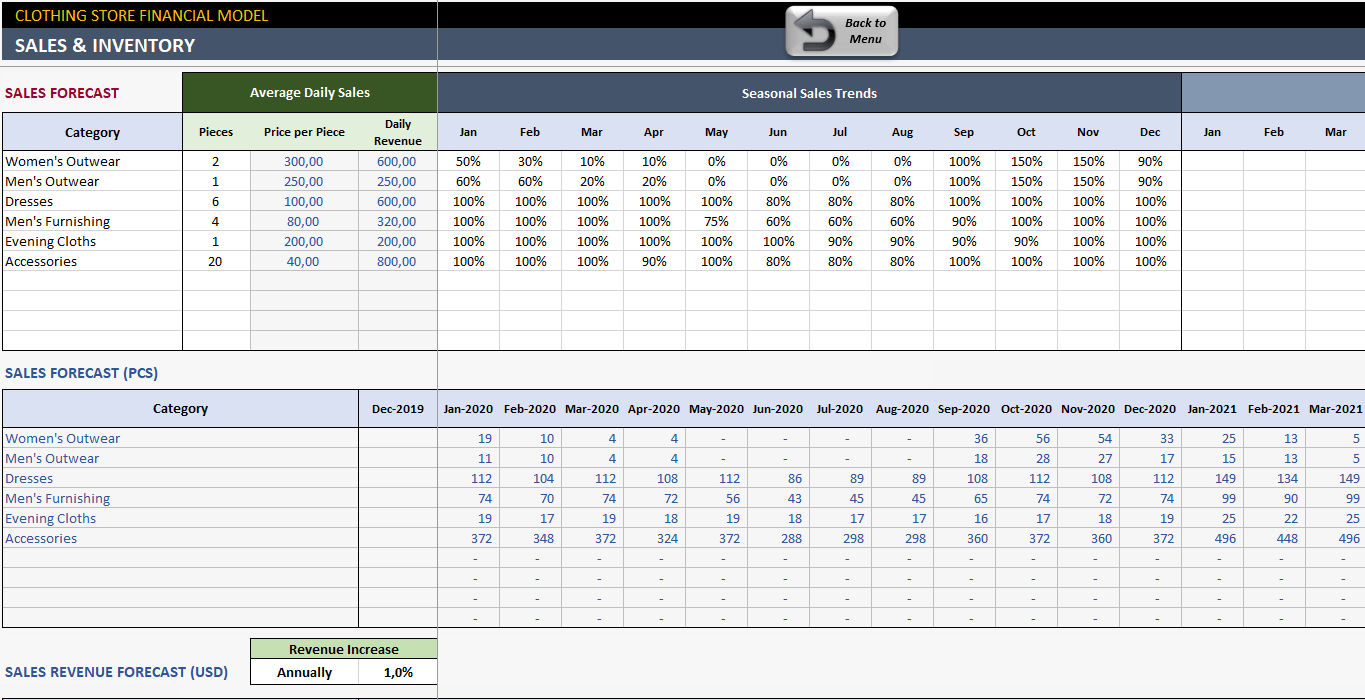
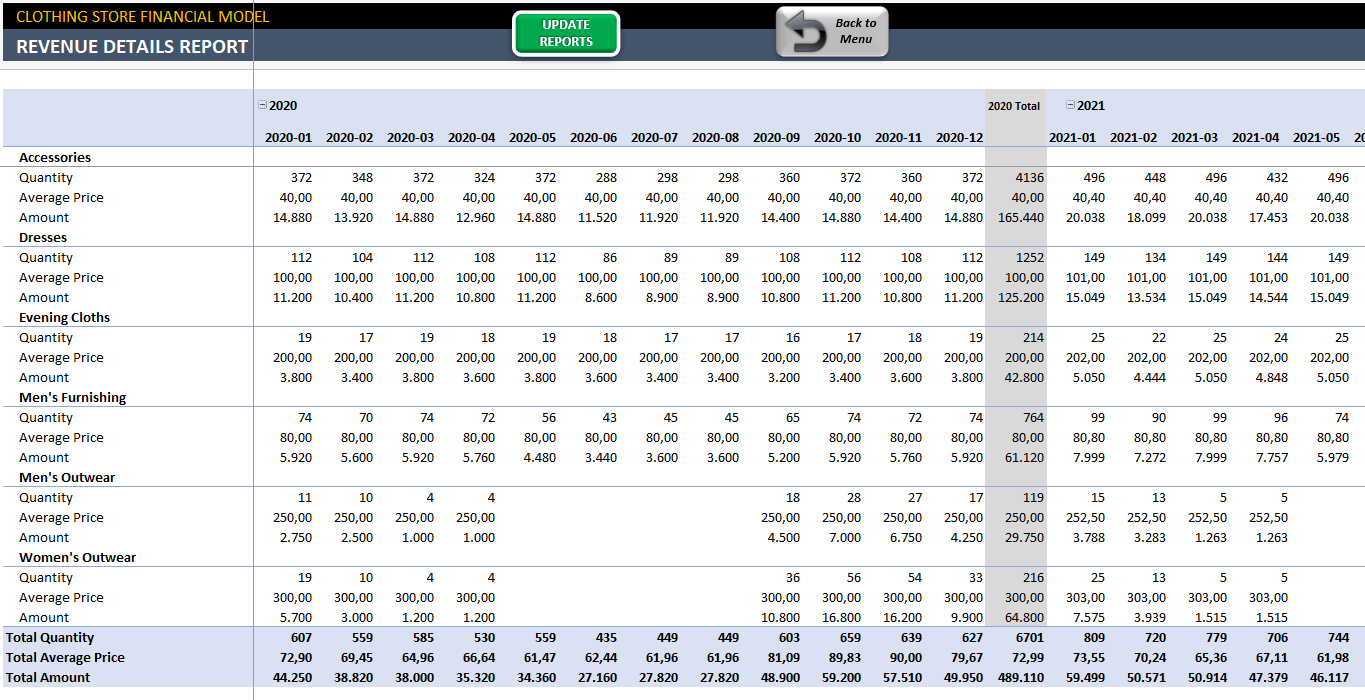
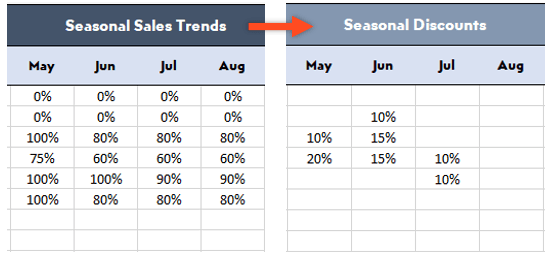
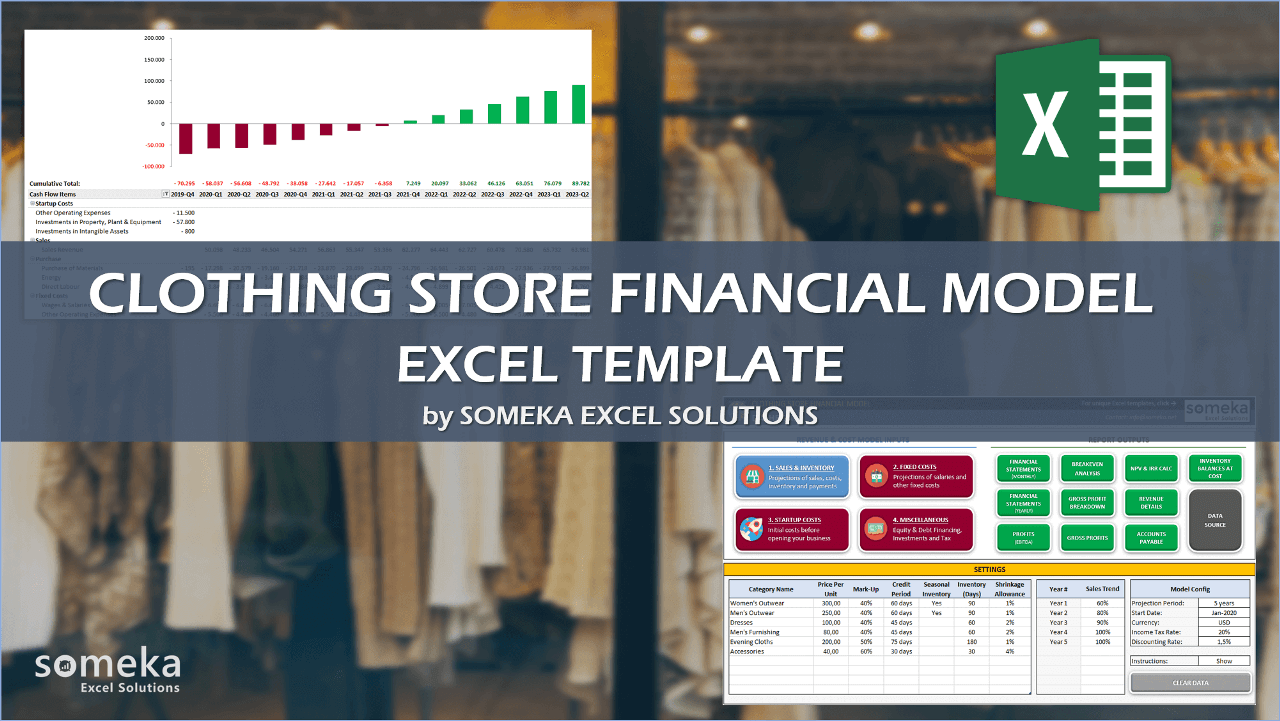
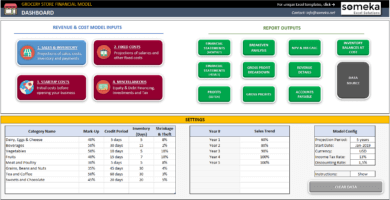
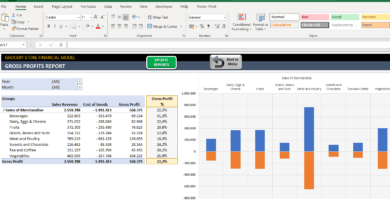
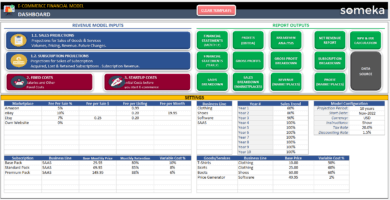
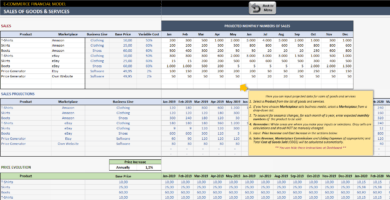
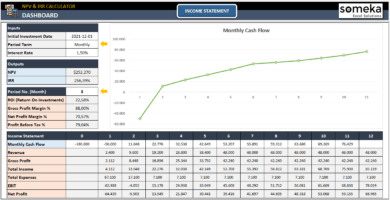
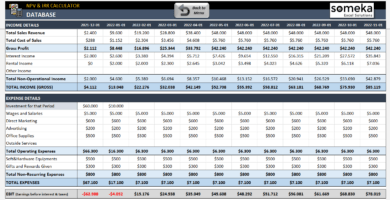
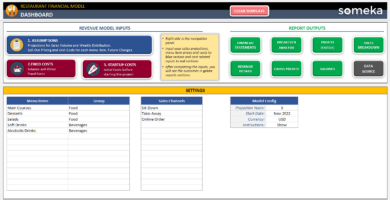
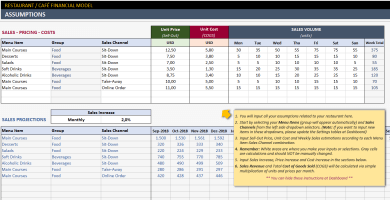
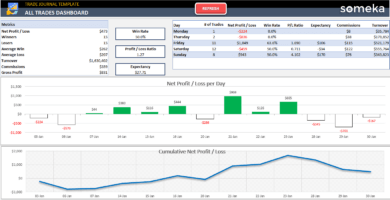
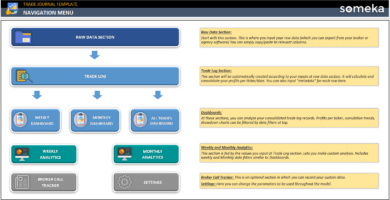
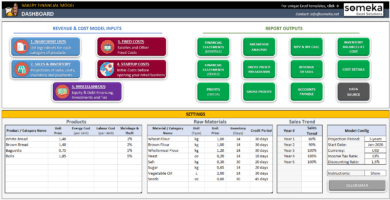
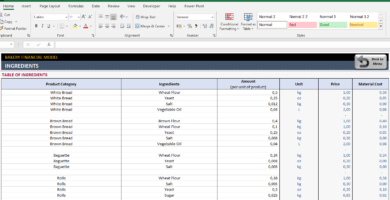
Yasmin Ali –
The attention to detail in the design is evident, but it’s not the easiest to grasp quickly.
anna rossi –
good job team!!!!
Khaled Chung –
I’m a fan of the templates, but the cost is a factor I can’t ignore.